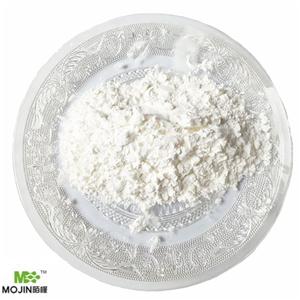
Calcium oxide NEW
| Price | Get Latest Price |
| Package | 25KG |
| Min. Order: | 1KG |
| Supply Ability: | 50000KG/month |
| Update Time: | 2025-05-16 |
Product Details
| Product Name: Calcium oxide | CAS No.: 1305-78-8 |
| EC-No.: 215-138-9 | Min. Order: 1KG |
| Purity: 99% | Supply Ability: 50000KG/month |
| Release date: 2025/05/16 |
| CAS: | 1305-78-8 |
| MF: | CaO |
| MW: | 56.08 |
| EINECS: | 215-138-9 |
| Product Categories: | Biocompatible Ceramics;Biomaterials;Calcium;Catalysis and Inorganic Chemistry;Chemical Synthesis;Materials Science;Inorganics;metal oxide;nano structured metal oxide;Metal and Ceramic Science;Oxides;1305-78-8 |
| Mol File: | 1305-78-8.mol |
 | |
| Calcium oxide Chemical Properties |
| Melting point | 2570 °C |
| Boiling point | 2850 °C (lit.) |
| density | 3.3 g/mL at 25 °C (lit.) |
| refractive index | 1.83 |
| Fp | 2850°C |
| storage temp. | no restrictions. |
| solubility | 1.65g/l Risk of violent reaction. |
| form | powder |
| Specific Gravity | 3.3 |
| color | White to yellow-very slightly beige |
| Odor | wh. or gray cryst. or powd., odorless |
| PH | 12.6 (H2O, 20℃)(saturated solution) |
| Water Solubility | REACTS |
| Sensitive | Air & Moisture Sensitive |
| Merck | 14,1686 |
| Exposure limits | ACGIH: TWA 2 mg/m3 OSHA: TWA 5 mg/m3 NIOSH: IDLH 25 mg/m3; TWA 2 mg/m3 |
| Stability: | Stability Stable, but absorbs carbon dioxide from the air. Incompatible with water, moisture, fluorine, strong acids. |
| InChIKey | ODINCKMPIJJUCX-UHFFFAOYSA-N |
| CAS DataBase Reference | 1305-78-8(CAS DataBase Reference) |
| NIST Chemistry Reference | Calcium monoxide(1305-78-8) |
| EPA Substance Registry System | Calcium oxide (1305-78-8) |
| Calcium oxide Usage And Synthesis |
| Chemical properties | It appears as white cubic crystalline powder. Industrial products often contain magnesia, alumina and ferric oxide and other impurities so exhibit dark gray, light yellow or brown. It is soluble in acid. |
| Uses | 1. Calcium oxide can be used in the manufacture of calcium carbide, soda ash, bleaching powder, used as building materials, refractoriness’, desiccant and soil conditioner and calcium fertilizer 2. It can be used as an analysis reagent and flux agent for manufacturing fluorescence powder. 3. It can be used in the manufacture of calcium carbide, soda ash, bleaching powder, also used for leather, waste water purification 4. Calcium oxide can be used as building materials, metallurgical flux agent and the major raw materials for the manufacturing of calcium hydroxide and a variety of calcium compounds. It is also the inexpensive alkali in the chemical industry. It is widely used in pesticides, paper, food, petrochemical, leather, waste water purification and so on. It can also be used for the drying of the laboratory ammonia and alcohol dehydration. 5. Use as drug carriers. 6. Uses as analysis reagents; Calcium oxide can be applied to steel, pesticides, pharmaceuticals, non-ferrous metals, fertilizers, leather and manufacturing of calcium hydroxide, drying of laboratory ammonia, carbon dioxide absorbent and alcohol dehydration. |
| Content analysis | Approximately 1 g of the sample was burned to constant weight (accurately weighed) and dissolved in 20 ml of dilute hydrochloric acid solution (TS-117). After cooling, dilute to 500.0ml with water and mix uniformly. Take 50 mL of this solution into the appropriate container, add 50ml of water. Add 30 mL 0.05ml/L disodium EDTA via a 50 mL burette with stirring (preferably with a magnetic stirrer); further add 15ml sodium hydroxide solution (TS-224) and hydroxy naphthol blue indicator (300 mg) for continue titration to the blue end. Per ml of 0.05 mol/L of EDTA corresponds to 2.804 mg of calcium oxide. |
| Identification test | 1 g of the sample was shaken with 20 ml of water, and the acetic acid test solution (TS-1) was added to dissolve the sample. The calcium test (IT-10) of this solution was positive. |
| Toxicity | ADI is not subject to restrictive regulations (FAO/WHO, 2001). GRAS (FDA, §18.5210; §184.12l0, 2000); See Calcium Oxide. It can stimulate the mucous membrane, causing sneezing, in particular, can cause fat saponification so the water will be absorbed by the skin, dissolving the protein with stimulating and corroding the tissue. It has strong effect against the eye mucosa, being able cause oral and nasal mucosa superficial ulcers, and sometimes there may be perforation of the nasopharyngeal diaphragm, deep respiratory tract disease. Inhalation of lime dust may cause pneumonia. In case of inhalation of dust, it can be treated via inhaling water vapor (add some of the citric acid crystals to the water in advance) and coat the mustard cream in the chest. If falling into the eyes, we can open up the eyes and immediately rinse with running water for 10~30 min and then rinse with 5% ammonium chloride solution. When the skin burns, it can be used with 5% citric acid, tartaric acid, acetic acid or salt solution of mineral oil or vegetable oil to remove the lime residue sticking to the skin. The maximum allowable concentration in the United States is 5 mg/m3. During operation, it should be paid attention to the protection of respiratory organs. Wear uniforms manufactured using dust-proof fiber, gloves and closed dust-proof glasses. Coat the ointment-containing grease. Clean after work. During the preparation and application, it should be prevented of dust inhalation. |
| Production method | Calcium carbonate calcination first apply calcium carbonate for reaction with hydrochloric acid to generate calcium chloride, followed by addition of ammonia for neutralization, standing for precipitation and filtration, followed by adding sodium bicarbonate for reaction to generate calcium carbonate precipitate. It is further subject to centrifugal separation dehydration, drying and calcination, followed by crushing and screening to obtain the finished product of medicinal calcium oxide. Its reaction is: CaCO3 + 2HCl → CaCl2 + CO2 + H2O CaCl2 + 2NH3? H2O? Ca (OH) 2 + 2NH4Cl Ca (OH) 2 + NaHCO3 → CaCO3 + NaOH + H2O CaCO3 [△]→CaO + CO2 ?. Limestone calcination method: crush the coarse limestone to 150 mm, and screen for the fine residue below 30 to 50 mm. Anthracite or coke required a particle size to be below 50 mm, which contains not too much low melting point ash content. The amount of anthracite or coke is 7.5% to 8.5% of that of limestone by weight. The selected limestone and fuel are timely and quantitatively supplied from the kiln crown to the kiln, further calcinated at 900~1200 ℃ and then lead to the finished product after cooling. In the calcination process, carbon dioxide is produced as by-product. Its reaction equation is: CaCO3 [△]→CaO + CO2 . |
| Usage limitation | GB 14880-94 (in terms of Ca, g/kg): beverages, cereals and their products, 1.6~3.2; infant food, 3.0~6.0. GB 2760-2001: Preparation of water 100mg/L (36mg/L in terms of Ca). |
| Hazards & Safety Information | Category Corrosive items Toxic classification poisoning Acute toxicity Intraperitoneal-mouse LD50: 3059 mg/kg Explosive and hazardous properties it is corrosive to the skin; powdered calcium oxide can be mixed with water to be explode; its mixture with alcohol can be flammable and explosive upon heating Flammable hazardous characteristics exothermic upon water with its heat being able to cause organic combustion; one of the air pollutants with heating together with alcohol mixture being able to cause combustion Storage and transportation characteristics Treasury: Ventilated, low temperature and drying; Store separately from combustible materials, acids and phosphorus pentoxide. Fire extinguishing agent mist water, sand Occupational Standard TLV-TWA 2 mg/m3; STEL 5 mg/m3 |
| Description | Calcium oxide (CaO, CAS Reg. No. 1305-78-8) is also known as lime, quick lime, burnt lime, or calx. Lime does not occur naturally since it reacts so readily with water (to form hydrated lime) and carbon dioxide (to form limestone). It is produced from calcium carbonate, limestone, or oyster shells by calcination at temperatures of 1,700-2,450℃. Calcium Oxide is a solid with a very high affinity for water - it will react with water in the air, or in your skin or anywhere it can and form calcium hydroxide. This reaction is exothermic so it releases a lot of heat while it is reacting - there fore as well as being corrosive and causing significant skin irritation, calcium oxide's reaction with water can also cause burns. Calcium hydroxide is basically hydrated calcium oxide. It is alkali so can be corrosive. In solution it makes limewater. CaO is not found pure in nature but rather is contained in various abundant minerals (i.e. calcite, aragonite, limestone, marble) but vary greatly in their purity (impurities usually include magnesia, iron, alumina, silica, sulfur). Of these iron and sulfur are most troublesome (i.e. where clarity is important in glass). Lime minerals vary in the degree of crystallization and cohesion of the crystalline mass and the homogeneity of the matrix. Calcium oxide is the principle flux in medium and high temperature glazes, beginning its action (within the glaze) around 1100C. It must be used with care in high-fire bodies because its active fluxing action can produce a body that is too volatile (melting if slightly overfired). Lime, or calcium oxide, is a principle ingredient in the production of Portland cement, the basis for most mortars and concrete. Hydrated or ‘slaked’ lime is the chemical calcium hydroxide. This chemical is also used in mortars. Both types of lime are strong bases and are also used in food production (calcium hydroxide is commonly used in making corn tortillas), petroleum refining and sewage treatment. In the household it is used by aquarium hobbyists to add bioavailable calcium to fish tanks. It is also found in hair relaxers. |
| Chemical Properties | Calcium oxide, CaO, occurs as white or grayish-white lumps or granular powder. The presence of iron gives it a yellowish or brownish tint. |
| Physical properties | Calcium oxide is a white caustic crystalline alkali substance that goes by the common name lime. The term lime is used both generically for several calcium compounds and with adjectives to qualify different forms of lime. This entry equates lime, also called quicklime or burnt lime, with the compound calcium oxide. Hydrated lime, made by combining lime with water, is calcium hydroxide and is often referred to as slaked lime (Ca(OH)2). Dolomite limes contain magnesium as well as calcium. Limestone is the compound calcium carbonate. The term lime comes from the Old English word l?m for a sticky substance and denotes lime’s traditional use to produce mortar. Calx was the Latin word for lime and was used to name the element calcium. |
| History | Calcium oxide dates from prehistoric times. It is produced by heating limestone to drive off carbon dioxide in a process called calcination: CaCO3(s) CaO(s) + CO2(g). At temperatures of several hundred degrees Celsius, the reaction is reversible and calcium oxide will react with atmospheric carbon dioxide to produce calcium carbonate. Efficient calcium oxide production is favored at temperatures in excess of 1,000°C. In prehistoric times limestone was heated in open fires to produce lime. Over time, lined pits and kilns were used to produce lime. Brick lime kilns were extensively built starting in the 17th century and the technology to produce lime has remained relatively constant since then. |
| Uses | The major uses of lime are metallurgy, flue gas desulfurization, construction, mining, papermaking, and water treatment. About one third of calcium oxide production in the United States is used for metallurgical processes, principally in the iron and steel industry. Calcium oxide is used to remove impurities during the refining of iron ore. Calcium oxide combines with compounds such as silicates, phosphates, and sulfates contained in iron ores to form slag. Lime is also used for purification in other metal refining and to control pH in mining processes such as leaching and precipitation. The calcium oxide is also used in remediation of mine wastes to recover cyanides and to neutralize acid mine drainage. |
| Uses | In bricks, plaster, mortar, stucco and other building and construction materials; manufacture of steel, aluminum, magnesium, and flotation of non-ferrous ores; manufacture of glass, paper, Na2CO3 (Solvay process), Ca salts and many other industrial chemicals; dehairing hides; clarification of cane and beet sugar juices; in fungicides, insecticides, drilling fluids, lubricants; water and sewage treatment; in laboratory to absorb CO2 (the combination with NaOH is known as soda-lime, q.v.). |
| Uses | Calcium Oxide is a general food additive consisting of white granules or powder of poor water solubility. it is obtained by heating limestone (calcium carbonate) in a furnace. it is also termed lime or quicklime. it is used as an anticaking agent, firming agent, and nutritive supple- ment in applications such as grain products and soft candy. |
| Definition | ChEBI: Calcium oxide is a member of the class of calcium oxides of calcium and oxygen in a 1:1 ratio. It has a role as a fertilizer. |
| Production Methods | Calcium oxide is commercially obtained from limestone. The carbonate is roasted in a shaft or rotary kiln at temperatures below 1,200°C until all CO2 is driven off. The compound is obtained as either technical, refractory or agri cultural grade product. The commercial product usually contains 90 to 95% free CaO. The impurities are mostly calcium carbonate, magnesium carbon ate, magnesium oxide, iron oxide and aluminum oxide. |
| Aroma threshold values | Aroma at 1.0%: intense, high impacting fresh sweet juicy lime, citral with a distilled lime note, cool and refreshing with green juicy nuances. |
| Taste threshold values | Taste characteristics at 10 ppm in 5% sugar and 0.1% CA; intense fresh tangy lime juice, citrus citral candy lime character with notes of West Indian lime |
| General Description | Calcium oxide appears as an odorless, white or gray-white solid in the form of hard lumps. A strong irritant to skin, eyes and mucous membranes. Used in insecticides and fertilizers. |
| Air & Water Reactions | Crumbles on exposure to moist air. Reacts with water to form corrosive calcium hydroxide, with evolution of much heat. Temperatures as high as 800° C have been reached with addition of water (moisture in air or soil). The heat of this reaction has caused ignition of neighboring quantities of sulfur, gunpowder, wood, and straw [Mellor 3: 673 1946-47]. |
| Reactivity Profile | A base and an oxidizing agent. Neutralizes acids with generation of heat. Nonflammable, but will support combustion by liberation of oxygen, especially in the presence of organic materials. Reacts very violently with liquid hydrofluoric acid [Mellor 2, Supp. 1:129 1956]. Reacts extremely violently with phosphorus pentaoxide when reaction is initiated by local heating [Mellor 8 Supp.3:406 1971]. |
| Hazard | Evolves heat on exposure to water. Danger- ous near organic materials. Upper respiratory tract irritant. |
| Health Hazard | Causes burns on mucous membrane and skin. Inhalation of dust causes sneezing. |
| Fire Hazard | Non-combustible, substance itself does not burn but may decompose upon heating to produce corrosive and/or toxic fumes. Vapors may accumulate in confined areas (basement, tanks, hopper/tank cars etc.). Substance will react with water (some violently), releasing corrosive and/or toxic gases and runoff. Contact with metals may evolve flammable hydrogen gas. Containers may explode when heated or if contaminated with water. |
| Flammability and Explosibility | Not classified |
| Agricultural Uses | Calcium oxide (CaO) is a white powder with a neutralizing value or calcium carbonate equivalent (CCE) of 179%, compared to 100% for calcium carbonate (CaCO3). For quick results, either calcium oxide or calcium hydroxide [Ca(OH)2] is used. Calcium oxide is also known as lime, unslaked lime, burned lime or quicklime. Roasting CaCO3 in a furnace makes calcium oxide. A complete mixing of calcium oxide with soil is difficult because it cakes due to absorption of water. |
| Industrial uses | Lime is the most widely used reagent in the mineral industry for flotation of sulfides and, in some cases, non-sulfide minerals. The word “l(fā)ime” is a general term used to describe any kind of calcareous material or finely divided form of limestone and dolomite. In more strict chemical terms, lime is calcinated limestone known as calcium oxide (CaO), quicklime or unslaked lime.The slaked or hydrated lime Ca(OH)2 is the form of lime primarily used in mineral flotation. Production of high-calcium lime is based on calcination of limestone at a temperature of 1100–1300 °C in kilns. CaCO3+heat--->CaO+CO2 For high-magnesium (dolomitic) limestone, the calcination reaction (at 1000–1200 °C) is CaCO3·MgCO3 (limestone) + heat--->CaOMgO (quicklime-2CO2) |
| Safety Profile | A caustic and irritating material. See also CALCIUM COMPOUNDS. A common air contaminant. A powerful caustic to living tissue. The powdered oxide may react explosively with water. Mixtures with ethanol may igmte if heated and thus can cause an air-vapor explosion. Violent reaction with (I3203 + CaCl2) interhalogens (e.g., BF3, CIF3), F2, HF, P2O5 + heat, water. Incandescent reaction with liquid HF. Incompatible with phosphoms(V) oxide. |
| Potential Exposure | Calcium oxide is used as a refractory material; a binding agent in bricks; plaster, mortar, stucco, and other building materials. A dehydrating agent, a flux in steel manufacturing, and a labora |
| Shipping | UN1910 Calcium oxide, Hazard class: 8; Labels: 8-Corrosive material. |
| Incompatibilities | The water solution is a medium strong base. Reacts with water, forming calcium hydroxide and sufficient heat to ignite nearby combustible materials. Reacts violently with acids, halogens, metals. |
| Waste Disposal | Pretreatment involves neutralization with hydrochloric acid to yield calcium chloride. The calcium chloride formed is treated with soda ash to yield the insoluble calcium carbonate. The remaining brine solution may be discharged into sewers and waterways |
Packing &shipping&Payment
Shipping:by sea or by air
Payment:T/T,western union,moneygram
Packaging Details drum
Port:Tianjin
Lead Time :
| Quantity(Kilograms) | 1 - 10000 | >10000 |
| Est. Time(days) | 5 | To be negotiated |
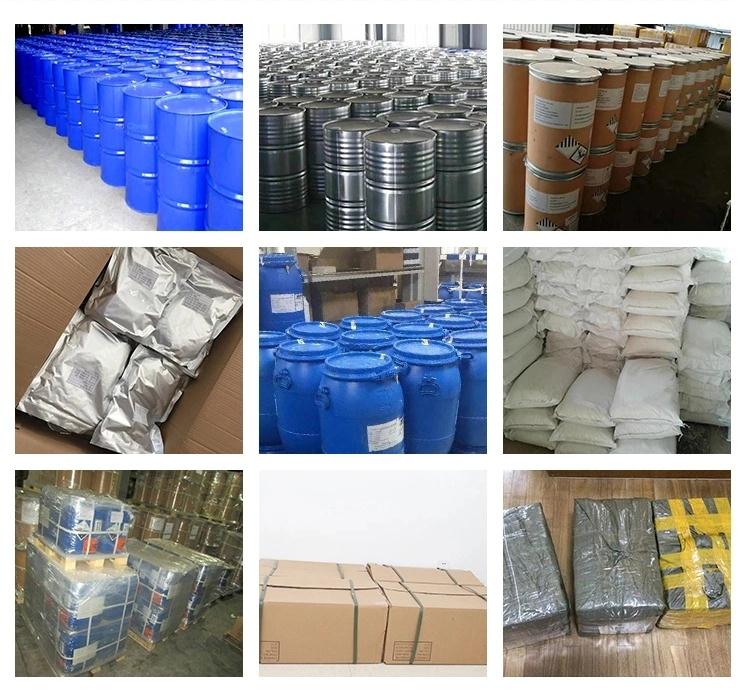
 Company information
Company information
Hebei Mojin Biotechnology Co., Ltd, Our company is a professional in 4'-Methylacetophenone,Levamisole hydrochloride ,N-Methylformamide and other chemical reagents research and development production enterprises. Our business covers more than 30 countries, most of the big customers come from Europe, America and other countries in the world, we can guarantee the quality and price. In recent decades, with the efforts of all employees, we have established many cooperative companies in shandong, henan, guangdong and other places. Our corporate purpose is based on the market, enhance the strength, take the road of scientific and environmental sustainable development, relying on the country. Technology r & d center, increase the investment in r & d, based on the domestic market, expand the international market, manufacturing quality products, sincere service to the society, into a modern, ecological, scientific and technological enterprise world.
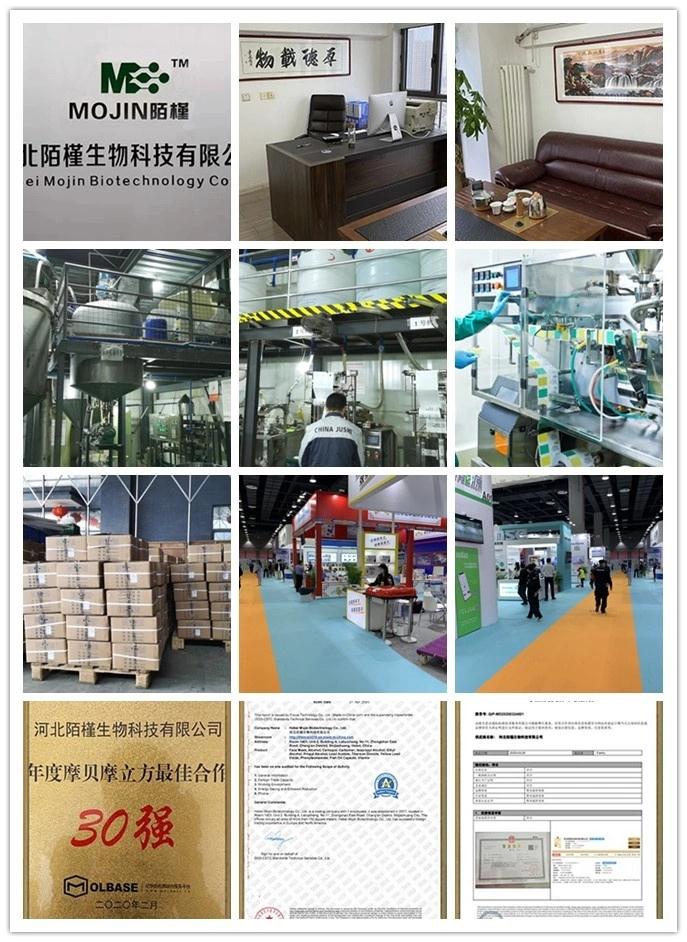 Advantage
Advantage
In stock
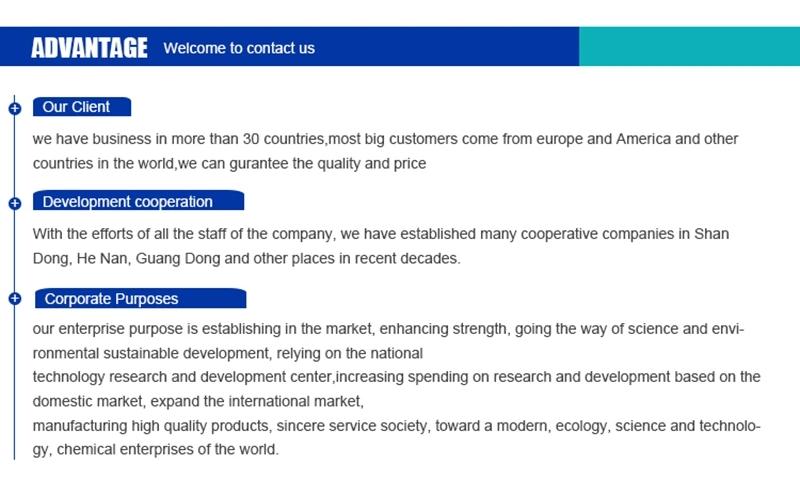
Company Profile Introduction
You may like
Recommended supplier
| Product name | Price | Suppliers | Update time | |
|---|---|---|---|---|
| $/ |
VIP5Y
|
RongNa Biotechnology Co.,Ltd
|
2025-04-29 | |
| $1.00/200KG |
VIP7Y
|
Hebei Chuanghai Biotechnology Co., Ltd
|
2024-11-12 | |
| $180.00/25ton |
Yujiang Chemical (Shandong) Co.,Ltd.
|
2024-11-06 | ||
| $10.00/1kg |
VIP5Y
|
Hebei Chuanghai Biotechnology Co,.LTD
|
2024-08-20 | |
| $0.00/1KG |
VIP6Y
|
Shaanxi Dideu Medichem Co. Ltd
|
2024-08-16 | |
| $15.00/1KG |
Hebei Henghe Import and Export Trading Co. LTD
|
2020-11-19 | ||
| $0.00/1KG |
VIP6Y
|
Shaanxi Dideu Medichem Co. Ltd
|
2020-05-03 | |
| $180.00/1ton |
Yujiang Chemical (Shandong) Co.,Ltd.
|
2024-08-30 | ||
| $180.00/1ton |
Yujiang Chemical (Shandong) Co.,Ltd.
|
2024-08-30 | ||
| $180.00/1ton |
Yujiang Chemical (Shandong) Co.,Ltd.
|
2024-08-30 |
- Since: 2017-12-08
- Address: 1013, Building B, CR Wanda Plaza, Qiaoxi District, Shijiazhuang City, Hebei Province, China
+86-13288715578
sales@hbmojin.com



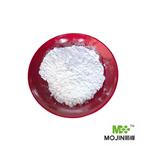
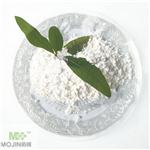
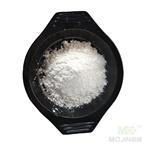
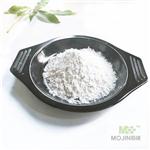

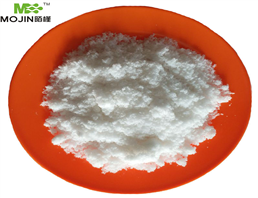
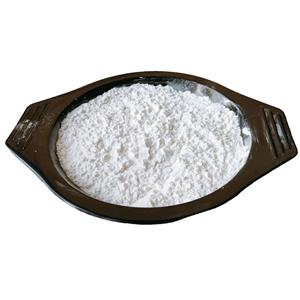

 Japan
Japan